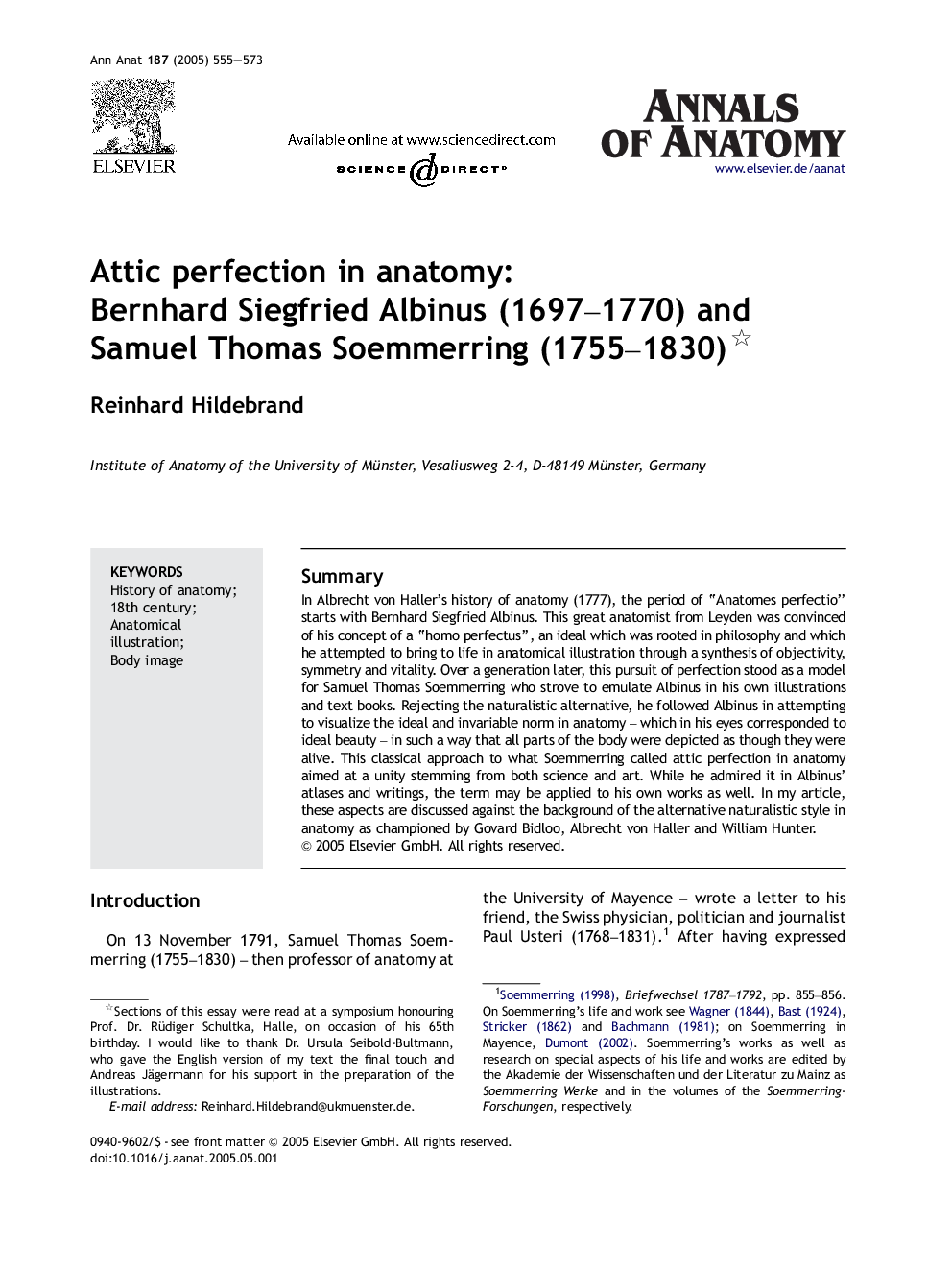| Article ID | Journal | Published Year | Pages | File Type |
|---|---|---|---|---|
| 9911019 | Annals of Anatomy - Anatomischer Anzeiger | 2005 | 19 Pages |
Abstract
In Albrecht von Haller's history of anatomy (1777), the period of “Anatomes perfectio” starts with Bernhard Siegfried Albinus. This great anatomist from Leyden was convinced of his concept of a “homo perfectus”, an ideal which was rooted in philosophy and which he attempted to bring to life in anatomical illustration through a synthesis of objectivity, symmetry and vitality. Over a generation later, this pursuit of perfection stood as a model for Samuel Thomas Soemmerring who strove to emulate Albinus in his own illustrations and text books. Rejecting the naturalistic alternative, he followed Albinus in attempting to visualize the ideal and invariable norm in anatomy - which in his eyes corresponded to ideal beauty - in such a way that all parts of the body were depicted as though they were alive. This classical approach to what Soemmerring called attic perfection in anatomy aimed at a unity stemming from both science and art. While he admired it in Albinus' atlases and writings, the term may be applied to his own works as well. In my article, these aspects are discussed against the background of the alternative naturalistic style in anatomy as championed by Govard Bidloo, Albrecht von Haller and William Hunter.
Related Topics
Life Sciences
Biochemistry, Genetics and Molecular Biology
Cell Biology
Authors
Reinhard Hildebrand,
